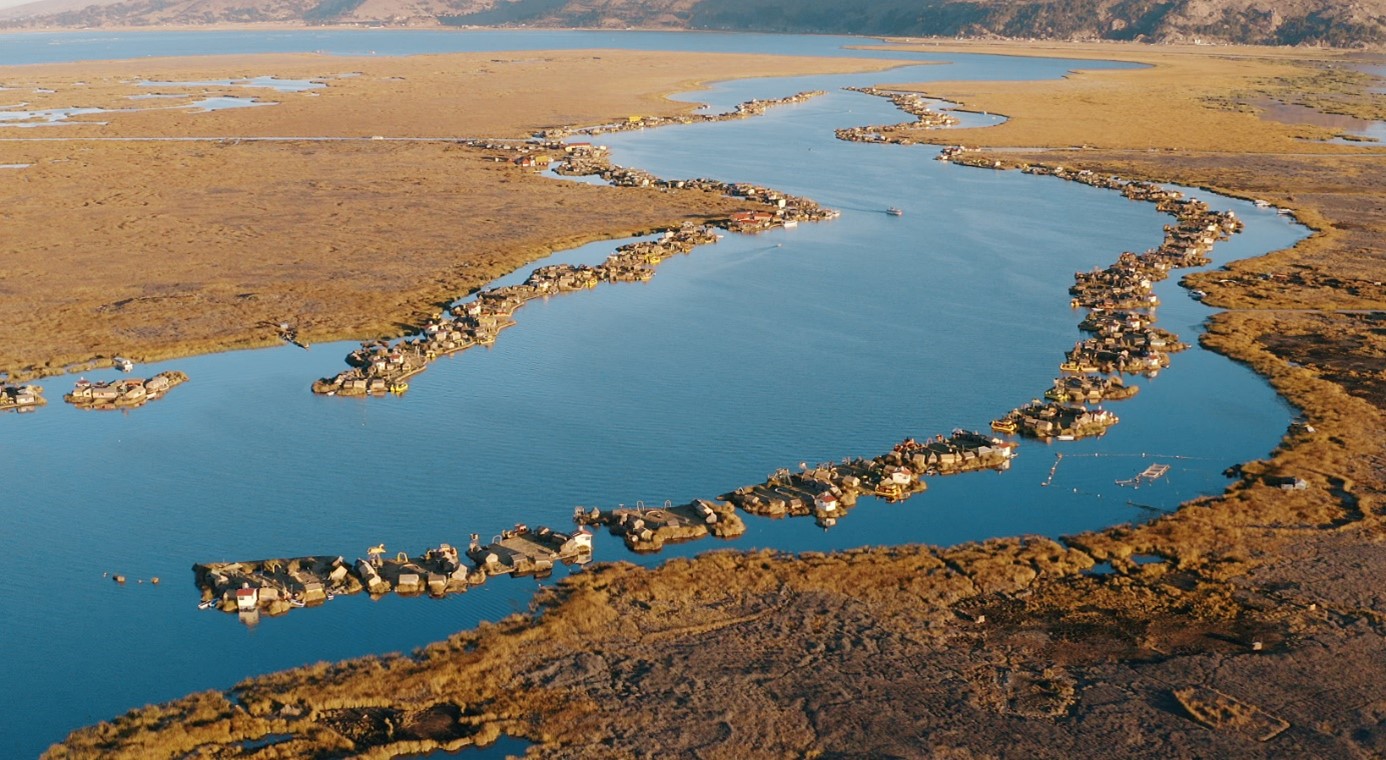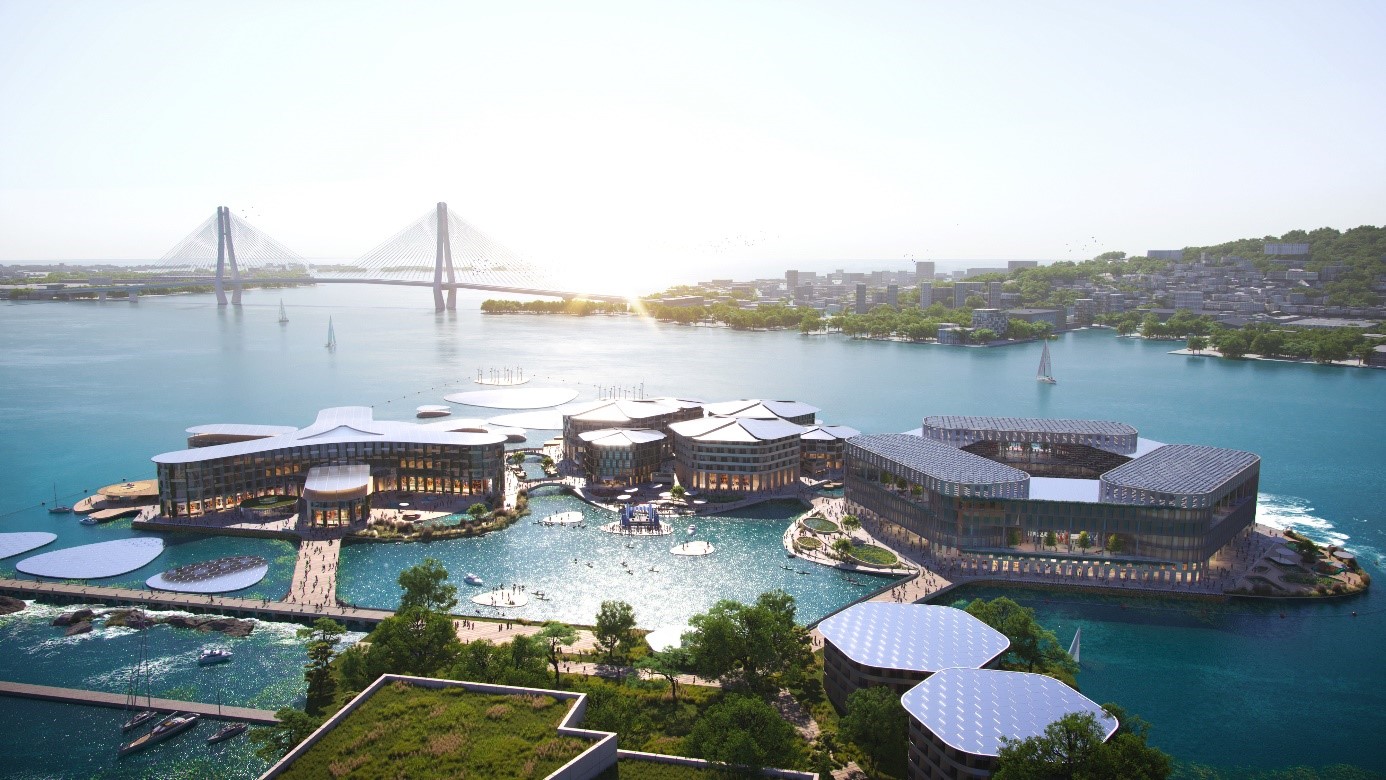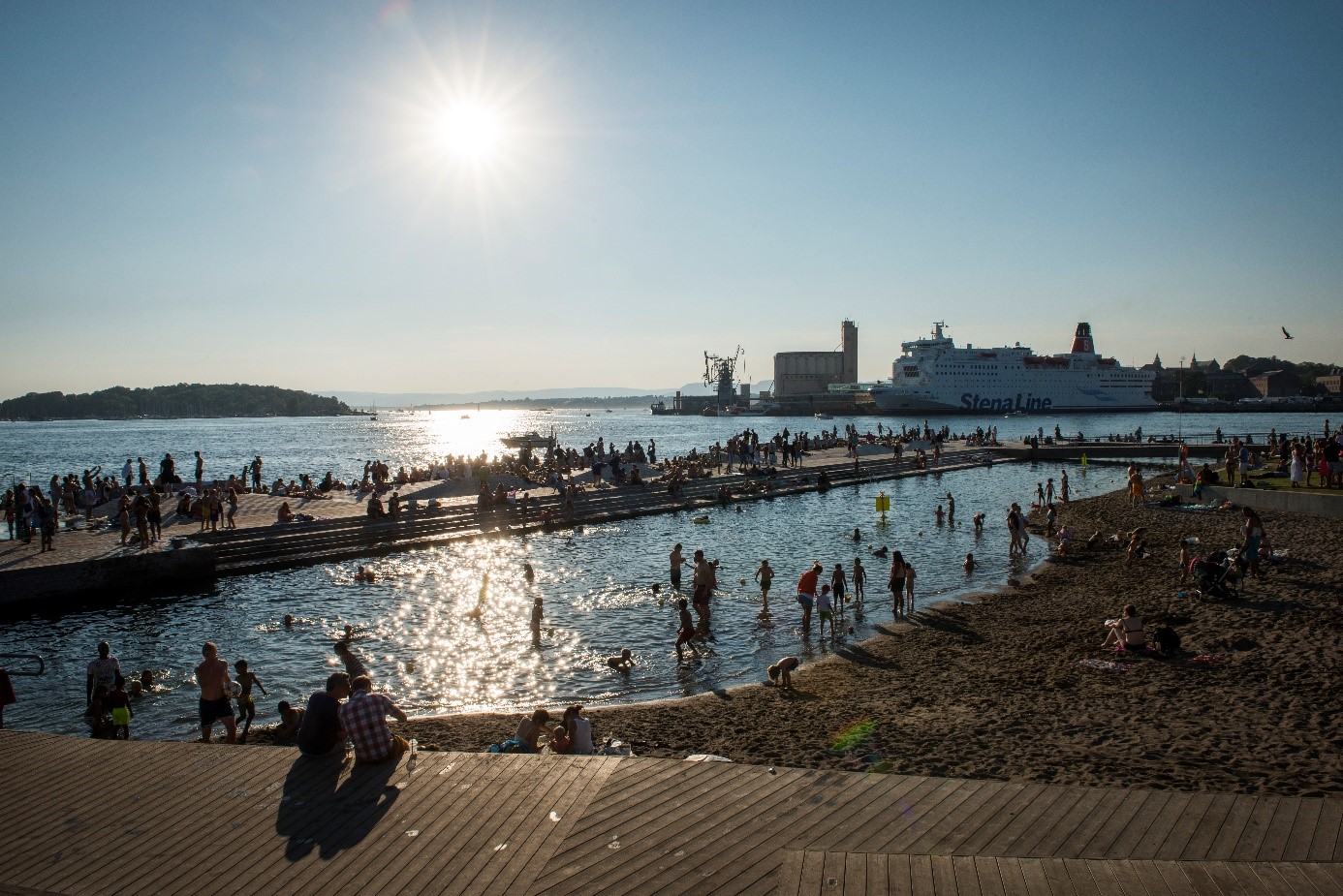In the Maldives, some 80% of land is less than 1 metre above sea level, and they are already encountering challenges due to rising sea levels. Global warming will result in rising sea levels becoming a major challenge in coming decades, not just for island states like the Maldives but also for metropolises such as Miami, Shanghai and Bangkok.
A lack of space can also be a challenge in regions less impacted by rising sea levels, such as Norway. Shoreline plots are attractive for both housing and business purposes, and the prices of such plots are being pushed up. Floating cities, floating urban districts or other floating infrastructure may be attractive solutions to various coastal space problems.
A floating city can be so many things. Many concept sketches have been launched, in various media, of entire, self-sufficient cities far out at sea with several tens of thousands of inhabitants. There is still some way to go before we see such city concepts being realised. Floating urban districts linked to existing cities are more relevant, and are something we are already seeing in many places around the world. Such floating urban districts can be designed to fit in such that you hardly notice you are on a floating structure. They can be reminiscent of Grilstad in Trondheim or Tjuvholmen in Oslo.
Floating homes are found in many places around the world. The floating Uros islands in Lake Titicaca in Peru, floating villages in Cambodia and floating homes in the UK are some examples. The Netherlands also has long experience of floating homes in the form of canal boats and barges, although it has recently moved towards larger floating buildings. In 2021, Floating Office Rotterdam (FOR), a three storey floating office building opened whose occupants include the Global Centre on Adaptation.1 FOR is an energy positive building, which means it produces more energy than it consumes. It was built from wood on a floating concrete foundation. The building had to be designed such that it could be constructed in several parts and transported to Rotterdam via river. Access for visitors is via a footbridge. The centre of Rotterdam is a short distance inland, so FOR is shielded from waves.

Singapore and Busan in South Korea are other examples. Here too, there are a lot of people, little land and relatively calm waters. In Singapore, SINTEF has been involved in the development of floating units designed to expand the port.2 In Busan, South Korea, a large floating urban district is planned with construction scheduled to start in 2023.3 The area is intended for housing, research and tourism.

What about Norway?
At present, Norwegian cities are not particularly vulnerable to rising sea levels, although because of pressure on space and high plot prices floating urban districts and floating infrastructure are still relevant. One example of this is Sørenga next to the Opera in Oslo. Admittedly, this is a floating recreational area that is full of people every summer rather than a residential area. The benefit of this is that it frees up land. There are also other examples involving the increased use of floating structures as part of urban development or for recreation. Both Trondheim and Oslo have floating saunas, and there are floating holiday homes for rent along, for example, the coast of Helgeland. Another possibility, which is not necessarily related to urban development, is floating ports or terminals. Ports can be expanded with floating modules. This enables you to introduce new functions into a port without necessarily needing blasting work and having to fill in shorelines with permanent materials. It also provides flexibility, meaning you can, for example, create a new cruise ship terminal or facilitate energy storage without needing permanent interventions in coastal zones.

Another example is related to the development of offshore wind. The Norwegian government has a goal of awarding contracts for 30GW of offshore wind by 2040. Given their current size, this is equivalent to 2,000 wind turbines, most of which will be floating. This requires areas for fabricating floating foundations in steel or concrete and for assembling foundations, towers and turbines. Norway will need both shipyards and port areas for such a major development project. Floating units could play an important role during production and assembly.
Fabrication, transport and challenges
Large floating structures are nothing new. Floating offshore platforms pretty much already function as small towns. What is new is that communities or other functions will be built that would previously have been on land. We envision modular units that can be linked together into larger continuous units. What such units would look like and how they would be built depends on where they will be located, what the weather and climate are like and a whole host of other factors.
There are ideas and plans that range from the moderately ambitious to the spectacular. Obviously, the moderately ambitious ones are easier to build. Modularity is a keyword. Modular structures will be easier to standardise, easier to build and easier to assemble. You can also have multiple modules with different functions. We envision triangular, square and hexagonal modules. Just consider how the geometry would be connected, for example hexagons in a beehive design. If you are going to start somewhere, it is natural to think of floating units made of concrete or steel and that are not larger than something you could fit in a dry dock. We must adapt to the limitations of existing yards. Once the foundation modules have been constructed they would need to be transported from the yard to where they will be located and then anchored. The various foundation modules could then be connected to achieve the desired configuration. Next we would build directly on the floating foundations. The transport phase could be quite a challenge. This is where we would encounter poorer weather and bigger waves those that would be found where the floating city will eventually be located.
Naturally, the structures would have to be designed to ensure that they float and are stable. They would have to be constructed in such a way that they do not move much in waves so that they are comfortable to be on. We would also have to ensure that the forces acting on the modules would not separate them from each other over time and that the anchoring system would not fail and allow the structure to drift away. One advantage of floating units is that you avoid having to fill in the shoreline with uncompacted materials, although such structures can also impact the environment. For example, what would the impact on the environment be if we blocked out the light, closed off the surface and perhaps also had a structure that made sounds? Building infrastructure both offshore and onshore impacts nature and the environment. We are always talking about the biodiversity crisis, as well as the climate crisis, and awareness of our impact on biodiversity is growing strongly as we discuss building structures offshore. The impact on marine life must be addressed as early as in an early design phase and it may be that such structures could also stimulate increases in marine life? More knowledge is needed about this.
Activities in SINTEF Ocean
SINTEF Ocean has a range of activities related to floating urban districts and floating coastal infrastructure. SFI BLUES is a centre for research driven innovation where we are conducting research into the floating structures of the future with a view to a variety of applications. Urban development is one such application. At SFI BLUES we work across disciplines together with other research environments and with important industry partners. SINTEF Ocean has also selected floating coastal structure as one of eight priority areas for research.
We are good at things that float. Our expertise lies in being able to describe how waves, wind and currents will affect a floating structure. How will it move? What tolerances will the anchoring system have to have? How large will the forces acting on the connection points between the different modules be? We use manual calculations, numerical simulations and scaled experiments in hydrodynamic laboratories. Part of what we will be working on in 2023 is improving our understanding of how you can connect multiple floating modules. This will probably involve testing such a modular system in the Ocean Basin Laboratory in Tyholt in Trondheim during the year.
While the marine technology challenges presented by floating urban districts and floating coastal infrastructure are important, it is important to remember that if you are going to build a floating city you will need a lot of other expertise as well. The design and construction of such structures are multidisciplinary challenges that will require engineers, architects, urban planners, ecologists and many other specialists. Norway has the skills required to introduce floating urban districts and floating coastal infrastructure in Norway as well.










Comments
I am a university student studying architecture in Korea. I am very interested in floating architecture and even floating cities, and I use it as my vision. I think floating space is the direction of architecture and urban planning.
If anyone like me is interested in floating architecture and floating cities, please contact me. Let’s build a network of floating schools.
E-mail address : skwls1004188@naver.com
The health of the world’s ocean is being threatened and along with it food security for man and beast.
There is an urgent need to ban land reclamation as it degrades marine biodiversity.
It is not a big leap to transit from land reclamation to floating urbanism.
We need educate policy makers and planners.
Floating cities can help address the challenges posed by rising sea levels and land scarcity, according to the article.